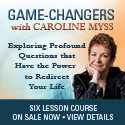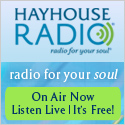 Editor's note: For those who are not familiar with the Reiki precept about gratitude, many versions of the Reiki precepts include a reference to gratitude, and sometimes "be humble" is translated as "be grateful".By Zeynep Yilmaz
Editor's note: For those who are not familiar with the Reiki precept about gratitude, many versions of the Reiki precepts include a reference to gratitude, and sometimes "be humble" is translated as "be grateful".By Zeynep Yilmaz
There are so many things to be grateful for in life, but can you be grateful if your daughter has a severe brain disorder and is having 150 seizures day? Can you? Seriously?
It was the day after Thanksgiving, a day after Venkat was pronounced brain dead; I was at the Children’s Hospital to see him one last time. I was honored to get to know him and be with him during his journey with brain cancer over the last 3 years. All of his family, friends, relatives, and teachers were taking turns at the ICU to see him to say their good-byes.
The ICU waiting room was crowded like it had never been before. While Venkat’s loved ones were waiting for their turns, I met a young father, Scott, in the family waiting room inside the ICU. Scott’s little daughter was in the ICU at the time. This little girl was born with a brain disorder. She was having 150 seizures a day. It was such an extreme case that she had never learned to walk because she couldn’t walk long enough without having a seizure. She was scheduled to have a brain operation the next day.
As we got to know each other, Scott asked what all the commotion outside the ICU was about. I explained Venkat’s situation; that he was a brilliant young man who was suffering from brain cancer and that it was only a matter of hours before they cut off the life support. Scott turned to me and said something that I’ll never forget. He said how grateful he was for his little girl. He said,"I'm so grateful that she is alive and she’ll live." It was a great lesson for me to see that everything’s relative when it comes to gratitude.
One develops a different level of gratitude, especially if one is volunteering at hospitals and hospices. The time I’ve spent at the Children’s Hospital has helped me to develop gratefulness at different levels. Every time I see a child having chemo or dialysis, I go back home and hug my kids. One becomes more selective about what to make an issue of; a low grade or not putting the dishes in the dish washer is not so important anymore.
Why are we trying to develop gratitude, by the way? Developing an attitude of gratitude rather than taking things for granted helps us to develop an awareness of life and cultivate joy and happiness. Isn’t it all we want: to be unconditionally happy? Gratitude helps us to take that additional step in the road to happiness.
Gratitude can be a consequence of transcending the first 2 principles of Reiki (Do not anger and Do not worry). If you can eliminate all anger and worries from your life, it automatically takes you to a space of gratitude. There are no other feelings left but being grateful for everything; a stage of unconditional gratefulness for “life” itself, a “life that is perfect as is”. I can’t explain how liberating that feeling is. It happened to me after my Shinpiden class (Japanese Reiki Master training).
Energetically, I got to such a high place that I developed an extreme acceptance and understanding that eliminated all anger and worries from my life (at least temporarily). All that was left was a feeling of gratitude. I remember looking around as if I was seeing the sky, the trees, and the grass, all for the first time and being grateful for their existence. Unfortunately, I fell back down from that stage, but at least I had a glimpse of what a wonderful feeling being in gratitude for an extended period of time could be like . If freedom from anger and worries creates such a liberation and joy, I can’t even imagine the liberation that enlightenment brings.
However, like all other Reiki precepts, we can intentionally practice cultivation of gratitude. Here I share a few tips that can help to cultivate gratitude.
Begin the day with gratitude: Every morning start the day being grateful for your breath, for waking up, for the human experience, for a wonderful day ahead. Starting the day with a positive tone helps set a positive tone throughout the day.
Notice little miracles every day:
Notice the water coming out of the shower and what a miracle it is, be grateful for having running water, be grateful to the person who invented the shower .
Notice the clouds, the sun, the rain, be grateful for the weather of the day, no matter what it is.
Notice the birds, the flowers, the animals, little miracles of the creation.
Be grateful for your work, for the roads, for public transportation, for the cars, for the people who made all the inventions we use in daily life.
Be grateful for food, for the people who grow the food, for the Earth unconditionally sharing its resources.
Be grateful for the people in your life, for everyone who has come into your life to teach and share something.
A great way to show your gratitude is to write letters to the people you’re grateful for (these can be short notes as well). Write a letter to your most memorable teacher, your coach, your best friend, your mom, dad, even though you may choose not to send the letters, writing it down will transfer the ripples of your gratitude to the person.
Have your computer password set up for something that reminds you of gratitude. Learn how to say "gratitude" in different languages and use one of the translations as your password.
Develop awareness that everything you own owes its existence to others (your alarm clock, electricity, a sweater, the cell phone, etc.)
Every time you write a check, write “Thank you” or put a smiley face on it.
Take pleasure in every thing you do or see or touch; this is a fundamental step towards an” attitude for gratitude”.
You may keep a gratitude journal in which you write down every day 5 things for which you are grateful.
End the day with gratitude: Think about all the miracles of the day and be grateful.
I have been keeping a gratitude journal since the beginning of the year. I used a computer download. The Gratitude Journal opens up every time you start your computer. Here is the link to the journal.
http://www.gettingunstuckllc.com/Scroll down on the web site page and it’s on the left towards middle. You can click and download it yourself.
Here are some things that I wrote in my Journal, not in order of priority at all:
I am so happy and grateful for/that:
having a gratitude journal, holidays, meditation friends, potluck dinner, being healthy, having enough to do,108 sun salutations, my son’s recital, the Nutcracker Suite, watching the Survivor finale with the kids, the distant Reiki experiment, Reiki, a great yoga class, holiday break, 2nd tier friends, shelter and warm clothes, meditation, my off-day, having clarity of what I want, wonderful friends, my mind’s games, global rescue organizations, having a friend I love this much, (lots of entries for my best friend being safe in Haiti), being inspired, giving inspiration, my neck is not hurting this morning, hanging on and swinging, a spa day, endless possibilities, four seasons, being fit enough to finish 108 sun salutations, time to fill this in, the fact that I'm on a spiritual path, that I'm surrounded with friends, my life, warm clothes, snow, my work and office, the fog and the beautiful white scenery, chants, I have support/ gurus, I can forgive, I have a purpose, I feel GOOD, for Reiki as a spiritual path,, not panicking, it's Friday, birds, free membership to Allure and Lucky, Universe's plans, being sick to be grateful for wellness, feeling much better, being able to eat, feeling better, was able to do energization, presentations, I am able to PRACTICE, for all the people who donated to Haiti, for my son, a cubicle, being able to make trip plans, for being in MVIC, I am healthy, spring is coming, I have so many things to organize that I LOVE, many options we have, spring is almost here , surrounded with friends ,CYS party, my sister, continuous inspiration, all my upbringing, all great attributes which I'm willing to offer up, meeting hubby for lunch, breath, having time of my own, my off-day, rain, a happy Saturday, a deep sleep, satsangs, interesting personalities, Calyx challenge, my Olay basket, the challenge that prepares me to my future achievements and service, inspiration, I trust, the opportunity to FLOW, being able to serve, yoga teachings, all the blessings, non-alcoholic beer, Tazo tea, chips and green tea, squirrels, earl grey tea, I have a vent, slumber party, cell phones, tazo tea and breakfast, all saints and sages who came before us to inspire, spring, caramel tea, electricity, computer, newsletters, sun, vacation, spring, rain, wind and sun, croissants and sunrise in Paris, diversity of people, Istanbul, the crowd, modem, my hair dresser
I participated in a “Gratitude experience” 5 years ago. During the 42 days of the experience magical things happened. If you want to see the limits of gratitude, you can check it out at
http://www.gogratitude.com/.
You can join the worldwide community of Gratitude
http://www.worldgratitude.com/, or follow it on Facebook by typing: World Gratitude.
Gratitude attitude is about developing an awareness of life and attracting more miracles to your life by demonstrating gratitude to every day miracles. You will notice that you naturally begin to feel happier, less concerned about what you haven’t got but happy with what you have.
Zeynep “Premdasi” Yilmaz is a Reiki Master/Teacher, Yoga Teacher and Meditation teacher. Zeynep has been practicing, volunteering and teaching Reiki in Cincinnati, Ohio, with the goal of empowering individuals to tap into their highest potential.









































